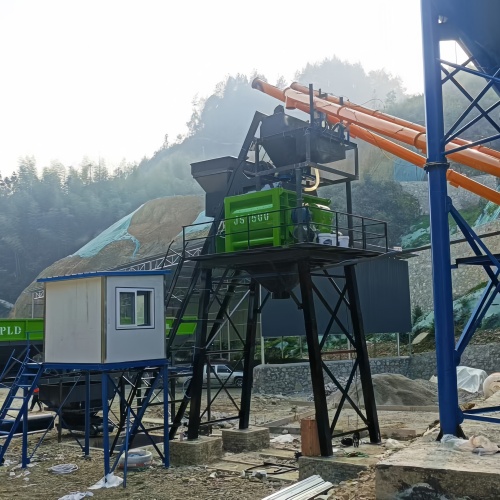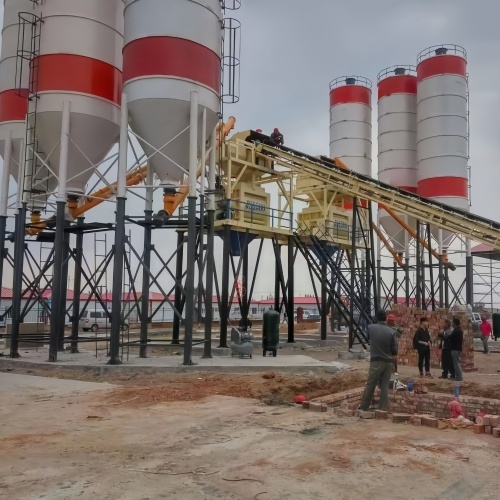The theoretical production rate of an HZS75 concrete batching plant is 75 cubic meters per hour. However, the actual output typically ranges between 50 and 60 cubic meters per hour. This discrepancy arises from various factors, including equipment configuration, production scheduling, material supply, and operational proficiency. Understanding these influencing factors can help users maximize the plant’s productivity.
Key Factors Affecting Output
1. Equipment Configuration and Performance
- Mixing Host Performance: The mixing quality and speed of the JS1500 mixer directly impact each batch cycle.
- Batching Efficiency: The speed and accuracy of the PLD2400 batching machine affect the overall production rhythm.
- Conveying Capacity: The capacity of screw conveyors and belt conveyors must match the host’s capabilities.
2. Production Organization and Management
- Material Supply: Timely supply of aggregates, cement, and other materials is critical.
- Transport Coordination: Scheduling concrete transport vehicles impacts continuous discharge.
- Operator Skill: The proficiency of operators influences equipment operating efficiency.
3. Formulation and Process Requirements
- Mixing Time: Different concrete formulations require varying mixing times.
- Slump Requirements: Affect mixing time and difficulty.
- Special Requirements: Certain specialty concretes may require extended mixing times.
Strategies to Improve Output
1. Equipment Optimization
- Select high-efficiency mixing hosts.
- Optimize conveying systems.
- Upgrade control systems.
2. Production Management Optimization
- Pre-production Preparation: Ensure all materials are ready in advance.
- Efficient Scheduling: Arrange transport vehicles scientifically to minimize waiting time.
- Maintenance: Regularly service equipment to reduce downtime due to failures.
3. Operator Skill Enhancement
- Train operators to improve skills and emergency response capabilities.
- Optimize parameter settings based on actual conditions.
- Monitor production data in real time and make adjustments promptly.
Practical Output Calculation Example
For C30 standard concrete:
- Mixing time per batch: 25-30 seconds
- Output per batch:1.5 m³
- Theoretical batches per hour: 50 batches
- Actual batches per hour:35-45 batches (accounting for various time losses)
- Actual hourly output: 50-60 m³ (under efficient operation)
Common Issues and Solutions
1. Output Below Expectations
- Causes: Inadequate equipment configuration, delayed material supply, unskilled operation.
- Solutions: Review equipment configuration, ensure timely material supply, enhance operator training.
2. Large Output Fluctuations
- Causes: Poor production planning, unstable equipment operation.
- Solutions: Develop scientific production plans, strengthen equipment maintenance.
3. Quality vs. Output Conflict
- Causes: Overemphasis on output at the expense of quality.
- Solutions: Find the optimal balance between quality and output.
Economic Benefit Analysis
For an HZS75 plant:
- Equipment Investment: Approximately ¥500,000 - 600,000
- Daily Output: 500-600 m³ (based on 10 hours of operation)
- Investment Payback Period: 3-6 months (varies based on local market prices)
Conclusion
The actual output of an HZS75 batching plant is influenced by multiple factors. Through scientific configuration, optimized management, and skilled operation, it is possible to achieve output levels close to the theoretical value. When selecting equipment, users should carefully consider their specific needs, choose reliable suppliers, and prioritize production management and operator training to ensure maximum plant efficiency.
If you require more detailed output analysis or customized solutions, please contact our professional technical team. We are committed to providing you with expert service and support.

